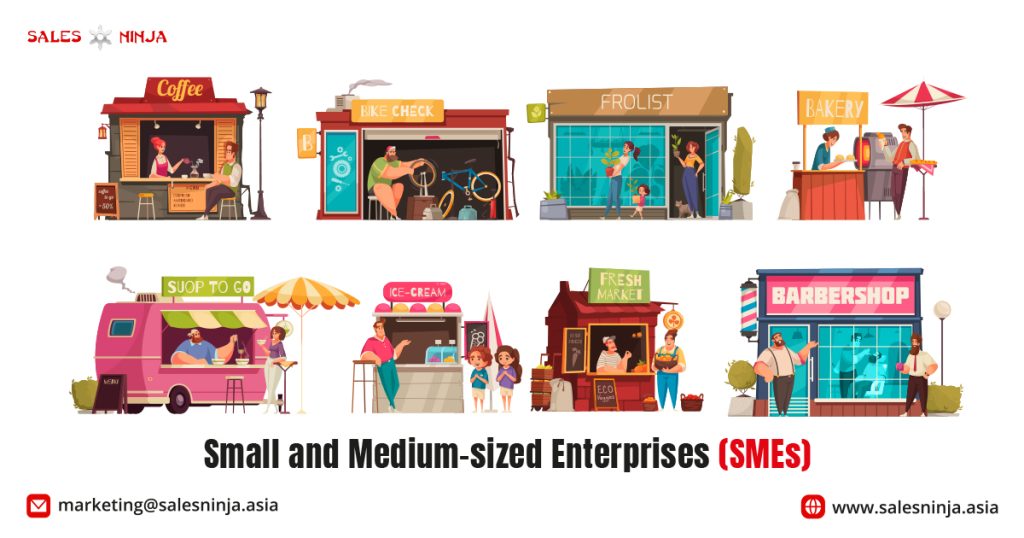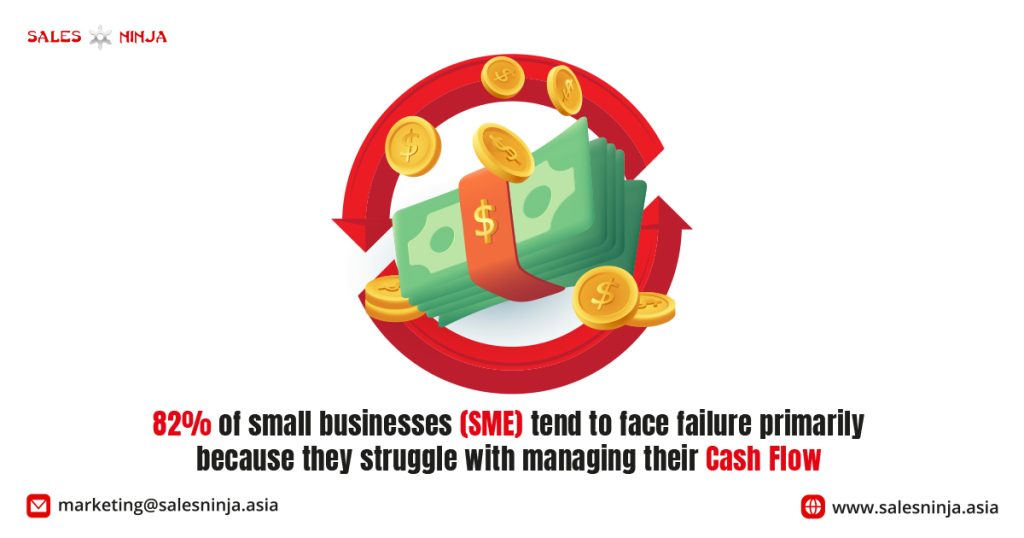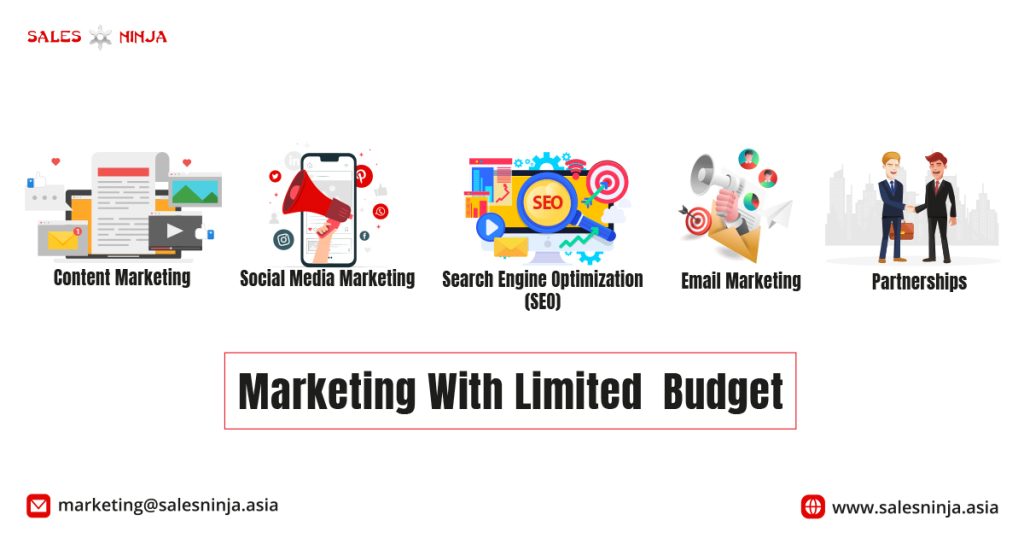Small and medium-sized enterprises, commonly referred to as SMEs, significantly contribute to economic growth and innovation. Despite their ability to adapt and recover from setbacks, these businesses consistently encounter a range of challenges that hinder their sustained growth. These challenges have persisted over the years, posing ongoing obstacles to SMEs’ development and longevity.
Some of these challenges are really tough to tackle. Shockingly, the U.S. Bureau of Labor Statistics says that about 20% of these businesses close down in their first year. With those numbers, it’s no wonder people get nervous about starting a business. But the good news is many of the common problems businesses face can be fixed. Sometimes, you just need to take a step back, figure out what’s causing the problems, and change your plan.
So, here we’ll discuss common SME growth challenges and provide practical solutions to ensure business resilience and success.
Small and Medium-sized Enterprises (SMEs) – What do they entail?

SMEs, which stand for small and medium-sized enterprises, make up the majority of businesses worldwide, and they are often independent firms striving for growth and success in their respective markets. However, they can be defined in various ways depending on the country. Each country has its own specific criteria for categorizing a business as an SME. These criteria may include factors such as the company’s annual sales, the number of employees it has, the value of its assets, its market capitalization, or a combination of these factors. Additionally, the definition of an SME may vary between different industries within the same country.
In general, SMEs are businesses that are smaller in size and typically have fewer than 50 employees. However, the maximum number of employees that qualify as an SME can differ from one country to another. For most companies, the upper limit is around 250 employees, although some countries set it at 200.
Key Challenges That Small and Medium-sized Enterprises (SMEs) Encounter
SMEs encounter challenges due to increased competition, adapting to changing market demands, technology shifts, and limitations in knowledge, innovation, and creativity. However, the significant challenges they face with their small size, and limited resources are:
-
Finding/Attracting New Customers
Statista’s research revealed that between 2016 and 2018, the most significant challenge faced by SMEs in the UK was attracting new customers. However, this challenge isn’t exclusive to the UK or that specific time frame—it’s a global issue that even the largest and most successful companies continually grapple with.

But, larger companies often have an advantage in attracting new customers due to their strong branding and financial resources. In contrast, SMEs frequently find themselves challenged by their limited resources and smaller budgets. Compounding this challenge, the cost of acquiring new customers has surged by almost 60% over the past six years, intensifying the pressure on businesses of all sizes, particularly small and medium-sized enterprises.
So, what should small and medium-sized enterprises do to address this persistent challenge?
-
Potential Solutions:
Getting new customers isn’t something that happens super quick, and there’s no magic trick that works for everyone. But the first step is making sure you offer really great products and services. No matter what you say in your ads, what really gets people to buy and keep coming back is if your stuff is awesome.
Next, you’ve got to figure out who your best customers are. Trying to get everybody interested doesn’t usually work. So, imagine who your perfect customers are, like painting a picture of them. Think about things like how old they are, what they like, how they act, and what problems they have. Once you’ve got that picture, you can make special messages and offers that they’ll love and share them where they like to hang out.
And, don’t forget to give them a little extra push to give your business a try, like offering discounts or special deals. That can be like the cherry on top that makes them want to check you out.
SMEs can also expand their reach and connect with potential customers by attending industry events and joining local business networks.
-
Difficulties in Getting Financial Support
One of the major issues for small and medium-sized enterprises (SMEs) is getting the money they need to run and grow their businesses. This challenge often arises because traditional banks and lenders might be hesitant to lend money to smaller businesses. When SMEs can’t access the necessary funds, it can hinder their ability to invest in new projects, hire more employees, or even manage day-to-day operations. Because then, they have to rely on their limited resources which makes it difficult to compete effectively or adapt to changing market conditions.
However, in many cases, SMEs turn to alternative funding sources like personal savings, family loans, or high-interest loans, which can be risky and costly. This can lead to financial stress, limited growth potential, and even business failure.
-
Potential Solutions:
Every small and medium-sized business (SME) has its own money needs and situations, so it’s important to look at different ways to get the money you need. Try checking out different ways to get funds, like government grants, angel investors (people who invest in small businesses), venture capital (money from investors), or peer-to-peer lending (borrowing money from individuals online).
Another important thing is to create a solid business plan and show that you can handle money well. This can improve your chances of getting a loan from a regular bank. Additionally, be careful with your money and make a budget to make the most of what you have.
-
Dealing with Growing Competition

As a small or medium-sized enterprise (SME) owner, you’re up against more and more rivals in your industry. These competitors could be other SMEs or larger, established businesses offering similar products or services. So, facing growing competition in such a business field is common, especially as they expand. In a Capterra study of small to midsize businesses, 16% of small businesses and 24% of medium businesses mentioned increased competition as a significant issue. This increased competition can lead to lower profit margins and reduced market share.
-
Potential Solutions:
There’s a valuable ecological concept known as Gause’s law, which states that two species requiring the same resources cannot coexist peacefully. Similarly, in the business world, when facing stiff competition, adaptation is key to survival.
As your business grows, work harder to differentiate yourself from competitors. This could involve enhancing your product features, adjusting pricing, or providing exceptional customer service to stay competitive. Building strong customer relationships and loyalty can also help in retaining a solid market position. However, if you’ve exhausted these options without success, it might be wise to consider exploring a different niche or market.
Pro Tip: Keep a close eye on industry trends and your competitors’ moves to stay one step ahead and adapt swiftly to changing market dynamics.
-
Adapting to changing systems and processes
SMEs frequently encounter a significant challenge when the systems and processes they have successfully relied upon for years no longer align with their evolving requirements. This situation is especially prevalent in industries characterized by rapid technological advancements and evolving business practices.
For instance, as e-commerce continues to gain prominence, a traditional brick-and-mortar store may find it necessary to revamp its processes to establish a robust online presence. Additionally, when SMEs undergo substantial growth, be it in terms of workforce size, customer base, or operational scale, the operational procedures that once operated seamlessly for managing a small team can become cumbersome and inefficient when applied to a more extensive workforce or increased business operations.
Adapting to new systems and processes can be expensive and time-consuming for SMEs. But if they don’t make these adjustments, they could become outdated and less efficient. This might cause them to lose customers to competitors who use modern technology and better methods. In the end, this could lead to less money coming in and lower profits.
-
Potential Solutions:
Provide training to employees on using new systems and technologies. This empowers them to adapt more quickly and efficiently. Besides, develop a long-term strategy for adopting new systems and prioritize investments based on their potential impact on the business.
Most importantly, implement changes incrementally rather than all at once. This can reduce the disruption and financial burden on the business.
However, the solution you will take to solve this small business pain point should always be based on your current situation and needs. Don’t buy expensive new equipment and hire new employees without any basis.
-
Cash Flow
Cash flow is like the lifeblood of SMEs. It’s the money coming in and going out, and if it’s not flowing smoothly, it can cause big problems. Imagine you have to pay rent, buy supplies, and pay your employees, but you don’t have enough cash at the moment. This can lead to late payments, strained relationships with suppliers, or even closing shop.

According to a recent study by U.S. Bank, a significant 82% of small businesses tend to face failure primarily because they struggle with managing their cash flow effectively or lack a proper understanding of it. However, this problem often arises due to factors such as accumulating debts, delayed customer payments, and seasonal fluctuations.
-
Potential Solutions:
It’s imperative not to exhaust your existing cash reserves or, worse yet, exceed them due to unchecked expenditures. The rationale behind this caution lies in ensuring the long-term sustainability and growth of your business. While it’s natural to incur costs during the startup phase, responsible financial management is key.
Overspending can lead to a precarious financial situation, making it challenging to weather unforeseen setbacks or invest in future growth opportunities.
Instead, consider building a financial safety net during prosperous periods, setting clear payment terms with customers, and exploring flexible arrangements with suppliers. This proactive approach can help you maintain a healthy cash flow, allowing your business to navigate the inevitable ups and downs of entrepreneurship more effectively.
-
Generating Lead
For small and medium-sized businesses striving to establish themselves in competitive markets, generating high-quality leads that eventually convert into customers can be a formidable task. The critical factor here is lead quality – it’s not just about increasing the volume of leads but ensuring they are genuinely interested prospects.
Many SMEs face several lead generation obstacles, and addressing these issues is crucial for sustained growth.

-
Potential Solutions:
To surmount these challenges, SMEs should adopt a multifaceted approach. Active engagement on social media, hosting digital events, and leveraging email marketing are effective methods to attract and nurture leads. Content marketing through informative blog posts enhances brand value, while digital advertising on platforms like Google and Facebook targets a specific audience. Prioritizing lead quality over quantity and customizing marketing efforts for different customer segments can significantly boost effectiveness. Additionally, SMEs must recognize that lead generation is an ongoing effort, requiring consistent implementation of proven methods for sustained success.
-
Marketing With a Limited Budget

Small and medium-sized enterprises (SMEs) have limited financial resources compared to larger competitors, making it a daunting task to promote their products or services effectively.
They can’t afford big advertising campaigns, extensive marketing teams, or high-priced tools and technologies. This limitation can hinder their ability to reach their target audience and compete in a crowded marketplace. Additionally, SMEs may not have established brand recognition, making it harder to stand out without substantial marketing investments.
-
Potential Solution:
To address this challenge, SMEs should focus on digital marketing strategies tailored to their budget constraints:
- Content Marketing: Create informative and engaging content related to your industry or niche. This positions your business as an authority and attracts organic traffic to your website.
- Social Media Marketing: Leverage social media platforms to connect with your audience. Paid advertising on platforms like Facebook and Instagram can be cost-effective and highly targeted.
- Email Marketing: Build and nurture your email list to maintain a direct line of communication with customers. Email campaigns can be automated and personalized, saving time and money.
- Search Engine Optimization (SEO): Optimize your website for search engines to improve organic visibility. It’s a long-term strategy that can drive free, high-quality traffic.
- Partnerships: Collaborate with complementary businesses for joint marketing efforts. Sharing costs and audiences can be mutually beneficial.
These strategies are budget-friendly and allow SMEs to reach their audience effectively. Content and social media marketing can be managed with minimal costs, and email marketing provides a direct channel to potential customers. SEO, although requiring time and effort, pays off in the long run by reducing advertising expenses. Partnerships expand your reach without significant financial investments.
SMEs have faced various challenges over the years, from customer acquisition to cash flow management. To overcome these hurdles, they must adapt, innovate, and seek tailored solutions. Additionally, Sales Ninja is here to support you. Our tailored solutions can boost lead generation, optimize marketing efforts, and enhance sales strategies. Explore our solutions at the Sales Ninja Website to empower your SME for success. For further guidance: https://salesninja.asia/contact/




